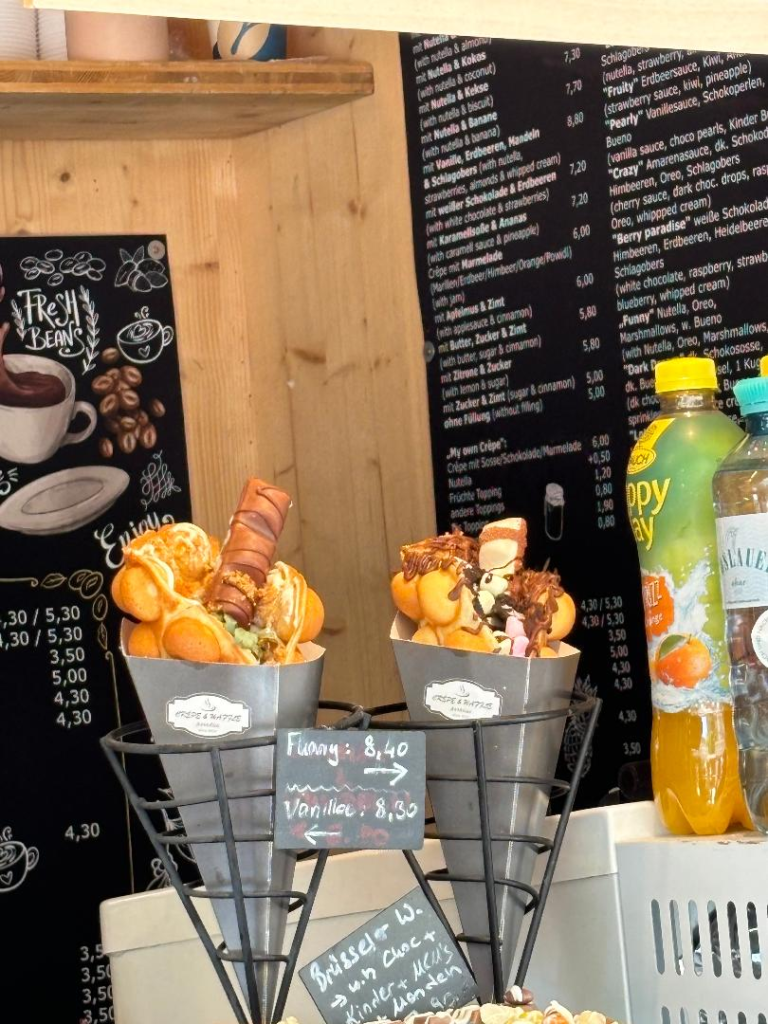May 19, 2023
We have never seen so many beautiful buildings in one place, so Pam was shocked when she Googled “Most Beautiful Cities,” and found New York on this list but not Vienna. As far as we are concerned it definitely deserves the title.
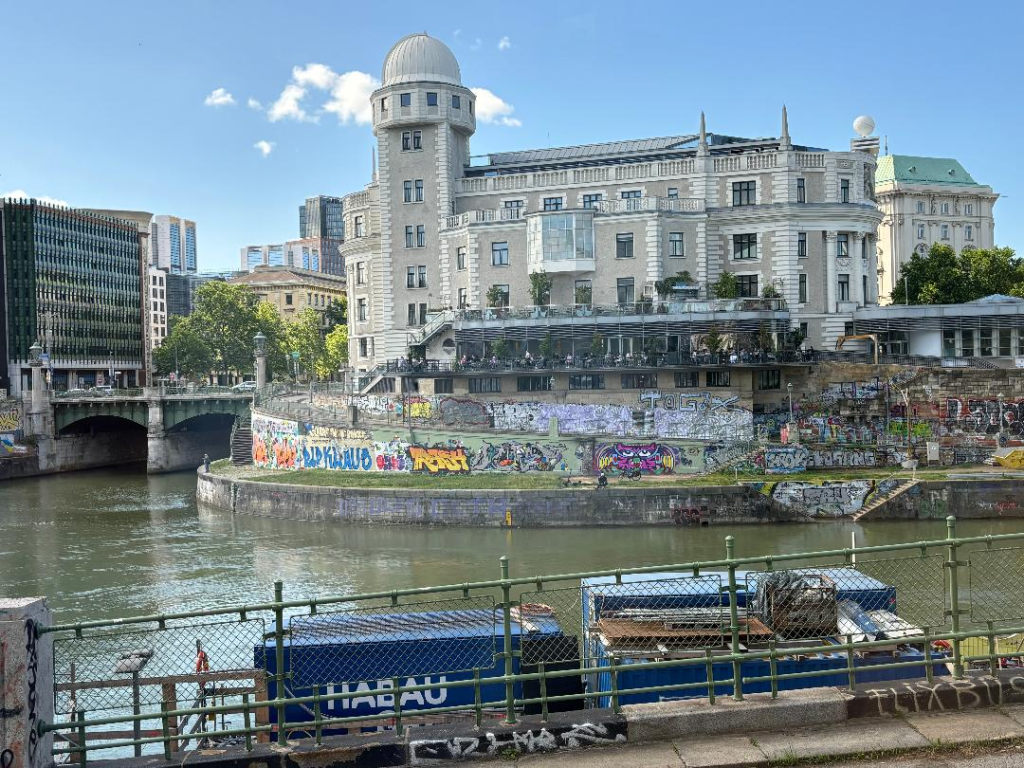


Vienna has a long history as an important center of culture, serving as the home of some of the most storied classical composers, artists , actors and directors and scientists of the 18th and 19th centuries. Mozart, Beethoven, Shubert, Gustav Klimt, Hedy Lamar, Otto Preminger, Klaus Maria Brandauer (Never Say Never Again, Out of Africa), Anna Freud (daughter of Sigmund), and, of course, the Vienna Boys Choir all call(ed) Vienna home. It is also home to a vast number of Gothic and Baroque-style buildings that make it such a beautiful city to visit.
We didn’t get to go inside any of these magnificent structures, but there was still much to see, beginning with the St. Francis of Assissi Church, better known as the Mexican or Emperor’s Jubilee Church to the locals.
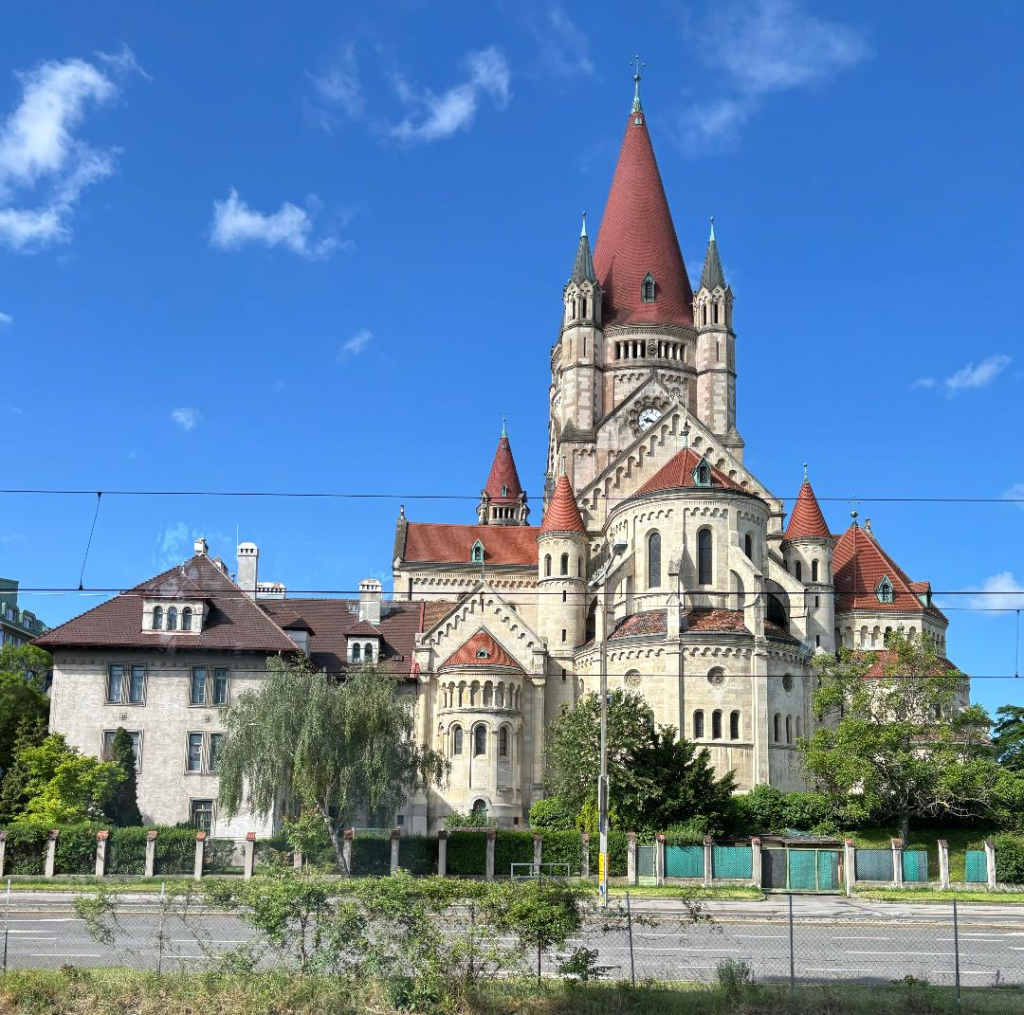
The church was a “gift” to the emperor to celebrate his 50th year on the throne. It is located in the Mexican Square, so named in recognition that Mexico was the only country to oppose the annexation of Austria to Nazi Germany.
Our tour took us around the Ring Road, constructed where the city walls used to stand. The original city walls were built in the 13th century and were paid for in large part with the ransom earned for the release of Richard the Lionhearted (remember him from yesterday’s post?). Over the years, the walls became deteriorated and obsolete and were eventually replaced with boulevards. In the late 1800s many government buildings were erected along these avenues. Because of its architectural beauty and history, it has been designated a UNESCO World Heritage Site.

One look at the Vienna Parliament building gives you a sense of what you’re in for. And then there’s the City Hall that looks much more like a church than a government building…

Hofburg is the former principal imperial palace of the Habsburg dynasty, one of the most influential ruling families in Vienna’s history. Built in the 13th century and expanded several times afterwards, it is located in the center of town and includes seventeen courtyards, a number of entrances and a huge complex of buildings. The area in front of the castle, where we are standing, is known as “Hero’s Square.” The square is named for two Austrian war heroes.

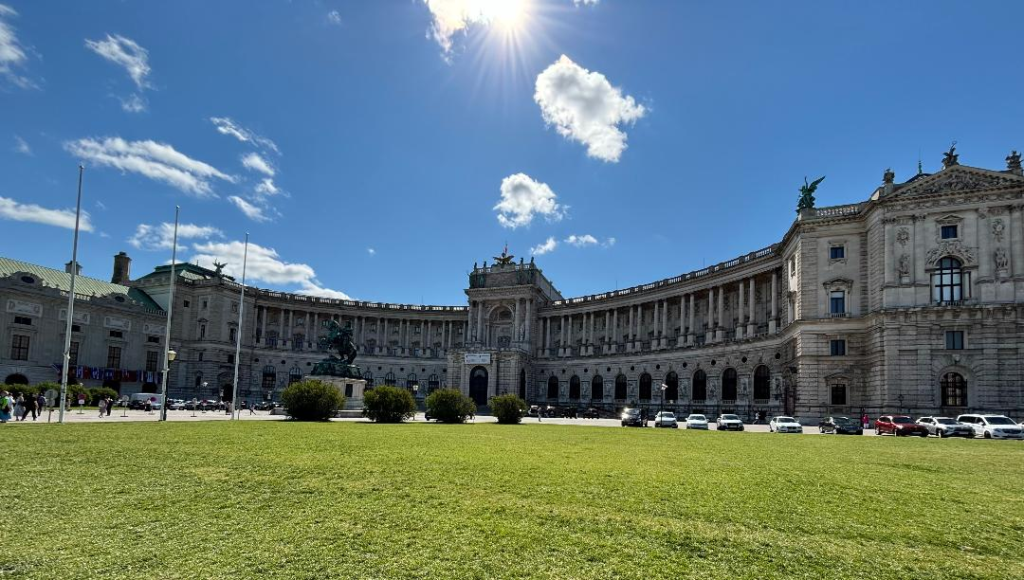
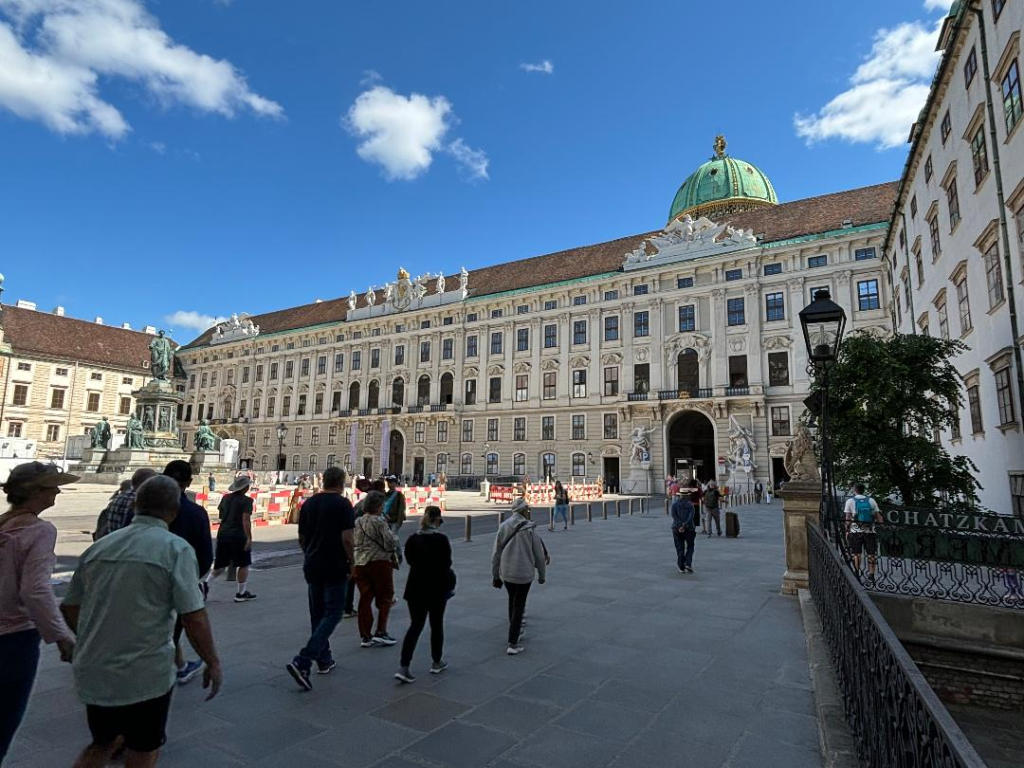

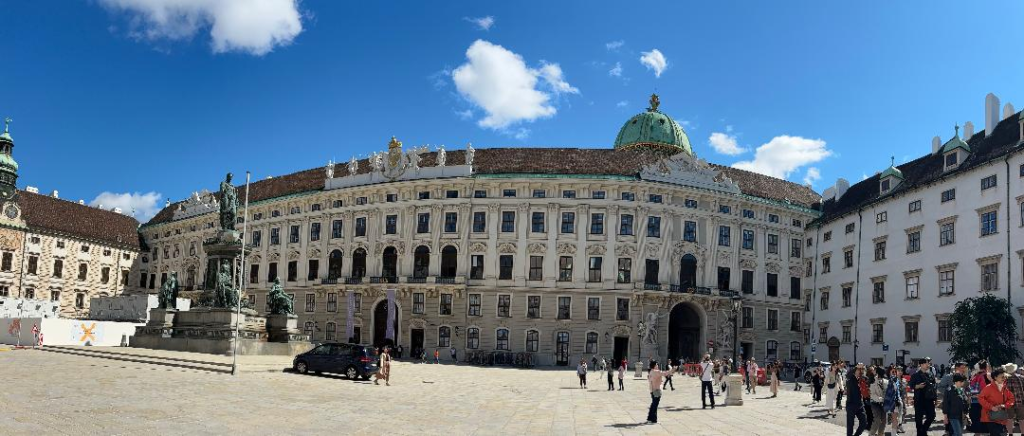
The “adornments” along the top and on the corners are more than life-size. They are enormous and so beautifully done.
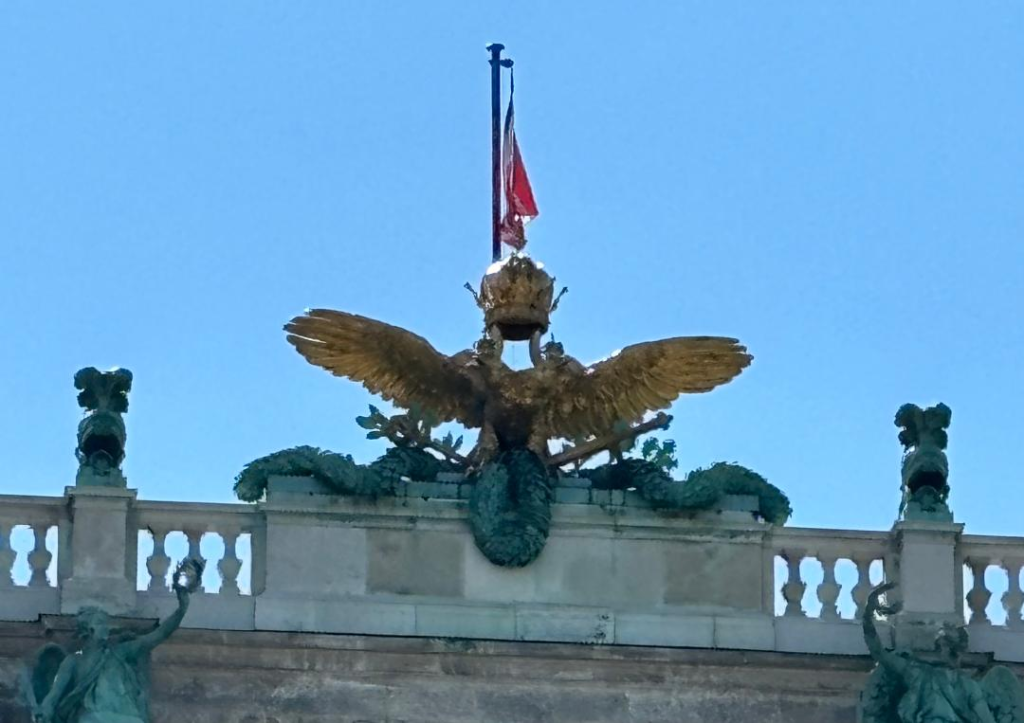
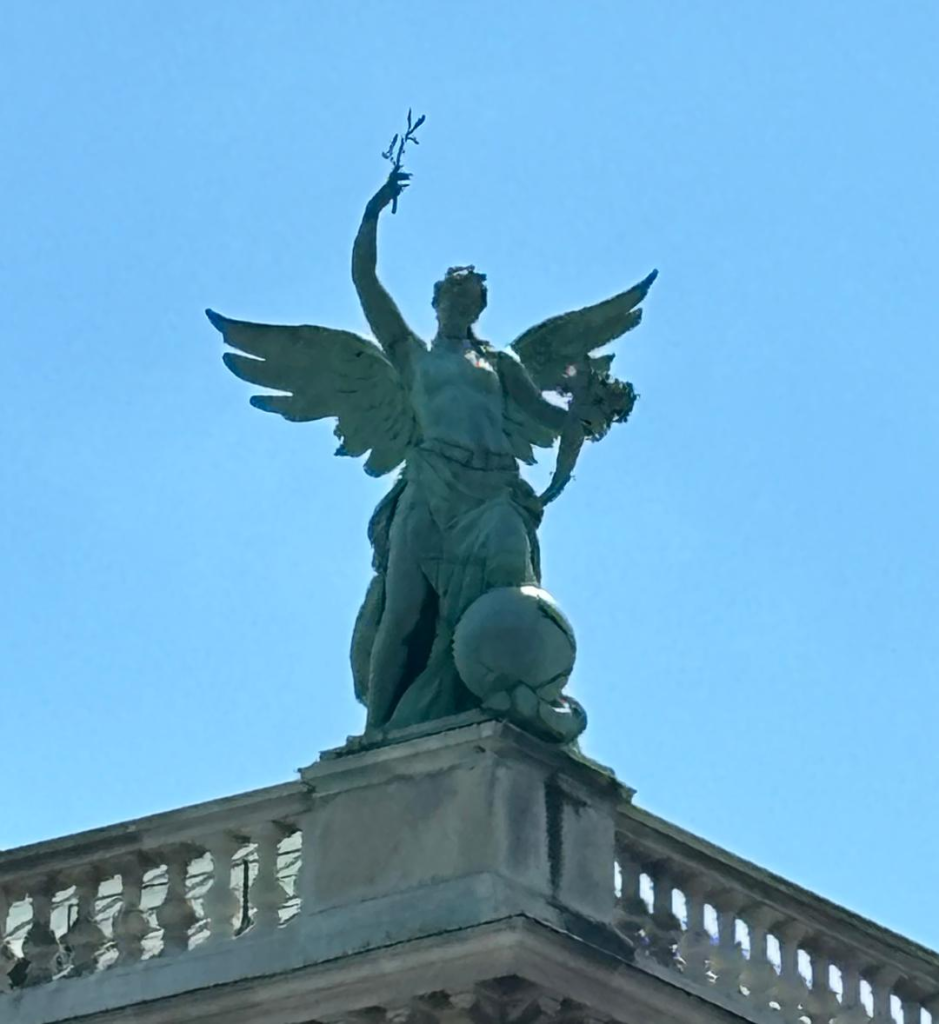

The clock tower at the end of the courtyard has a lunar clock from the 1600s, a modern clock (sorry, I don’t know what the technical term is), and a sun dial. One of them is bound to be right, don’t you think?
We exited this courtyard through what was once a drawbridge, and even the ceiling of that was a work of art.
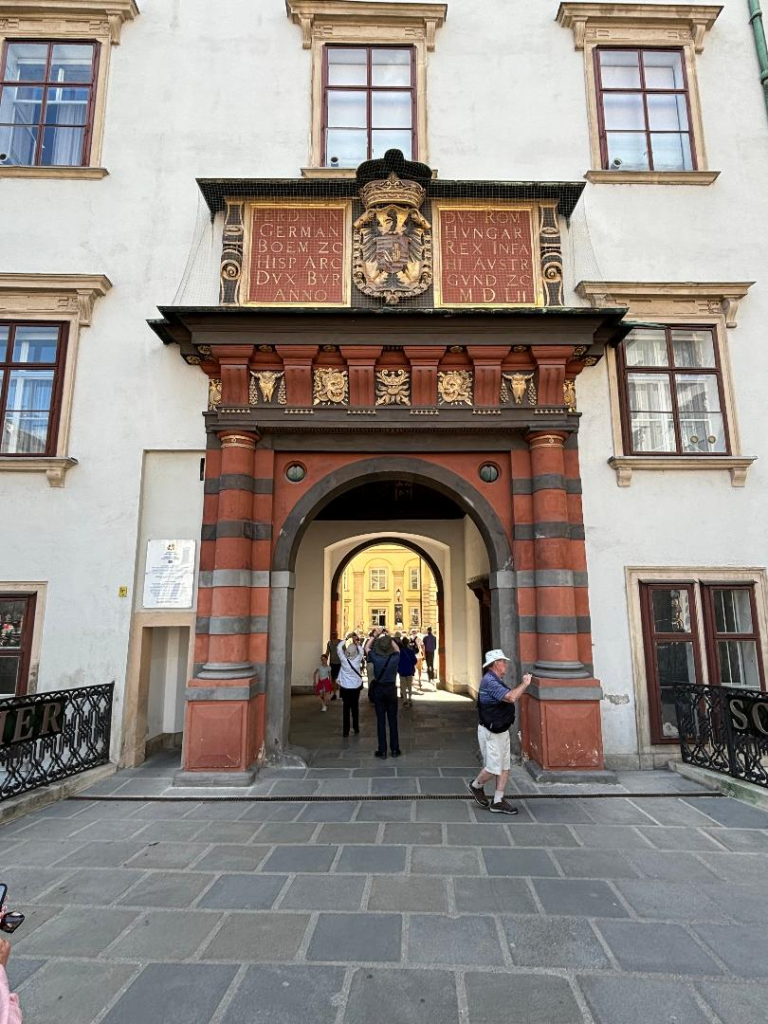
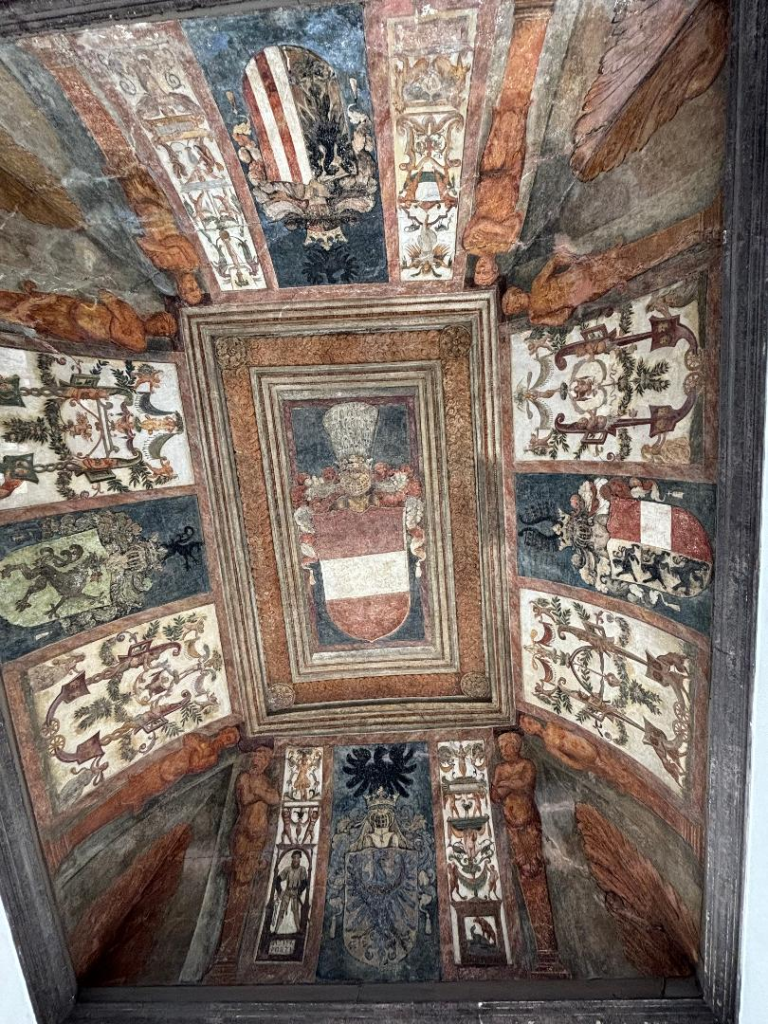
From there it was on to the City Library, home to more than 200,000 books and open to the public. The golden globes on top symbolize the universe; the message the artist is sending is that everything that could possibly be known about the universe can be found in the library.
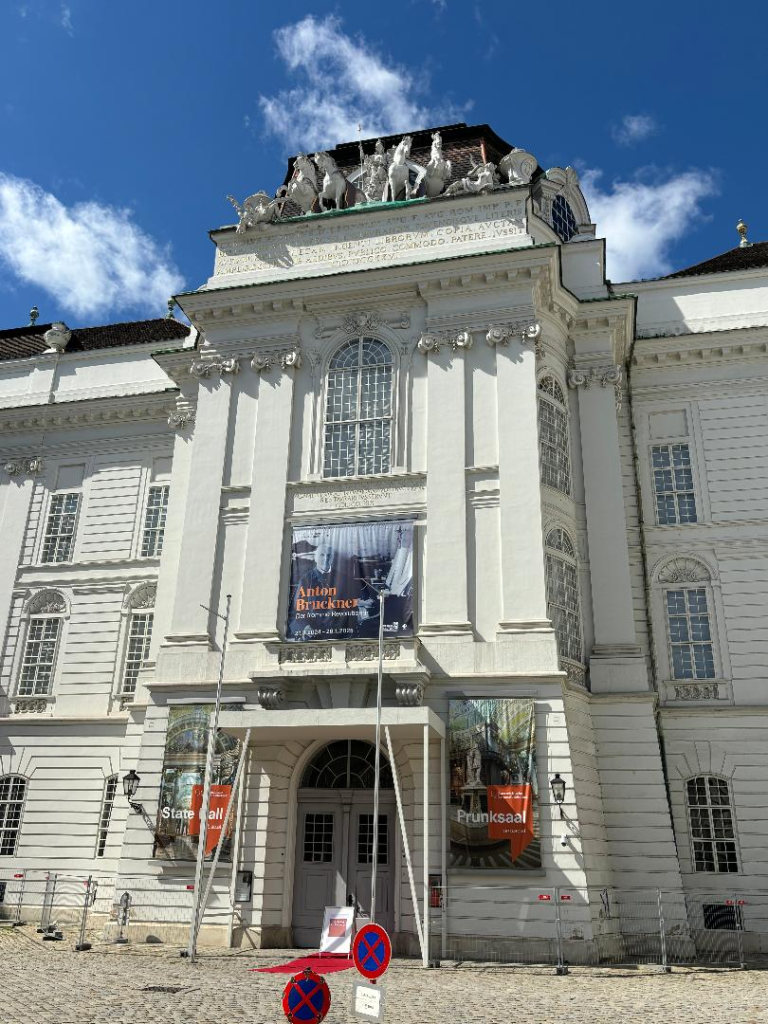
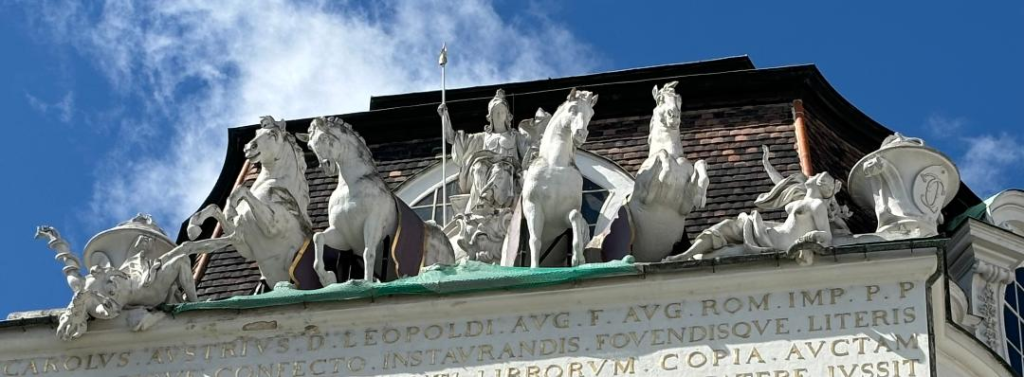
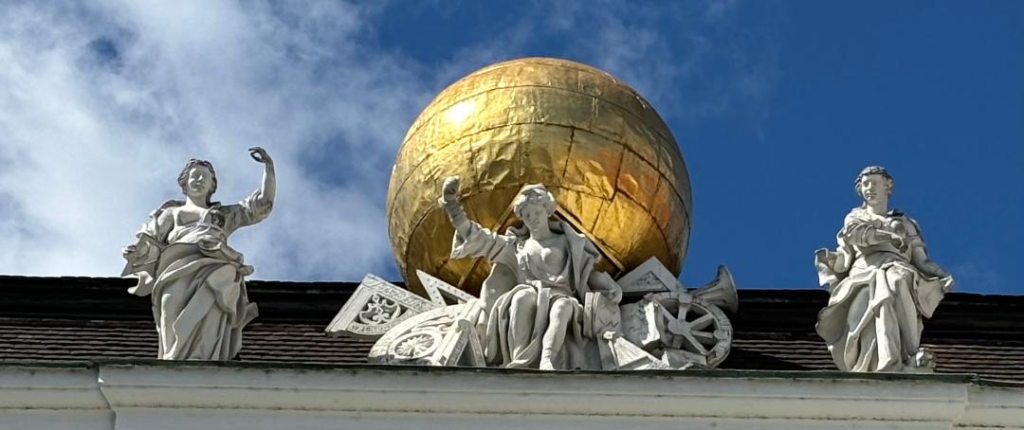
You can’t see it in these pictures, but the left side of the library is attached to a church where we were told the hearts of Habsburg family members are encased in silver urns and kept in a royal crypt. Their internal organs are encased in gold urns and maintained in another church, and their bodies are buried in a royal crypt in yet a third location. There are a couple of theories about why this might be. First, when an individual died in battle it was not always possible to transport the body home, so his comrades would cut out his heart for the family to bury when the army returned. A second possibility is that the royals thought that being in three separate churches would give them a greater chance of getting into Heaven. We’re not so sure we believe any of it!
Next up: the Museums of Art (below on the left) and History (below on the right). The Museum of History owns 30 million artifacts, only 1% of which are on display in the massive museum you see below.
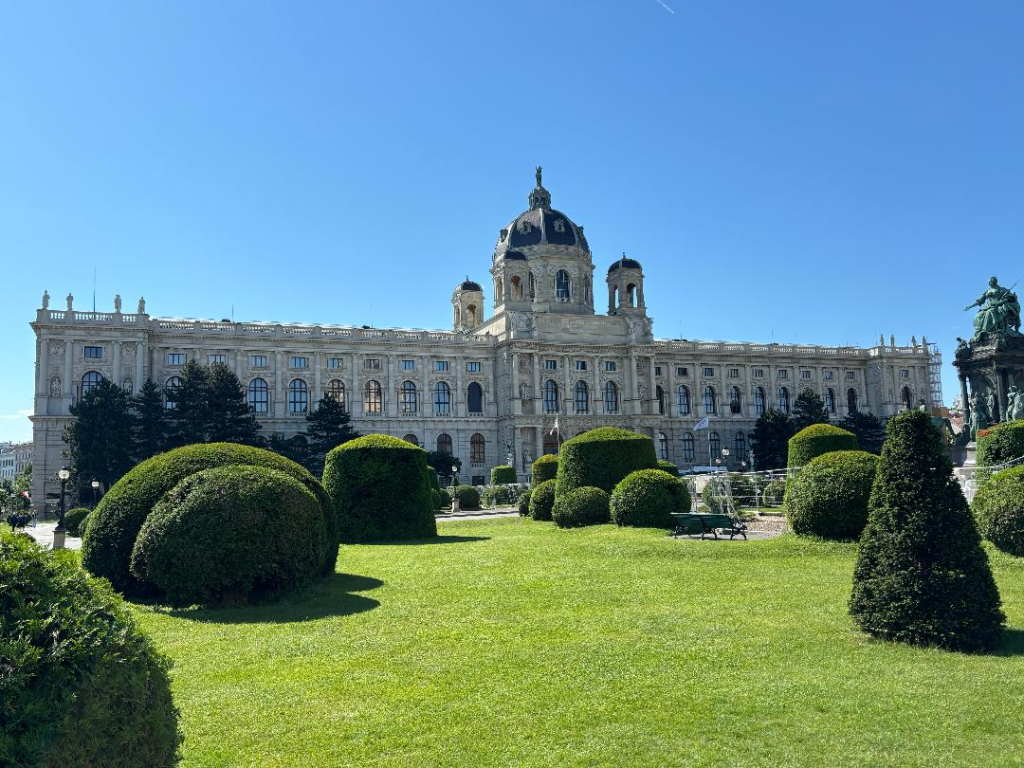
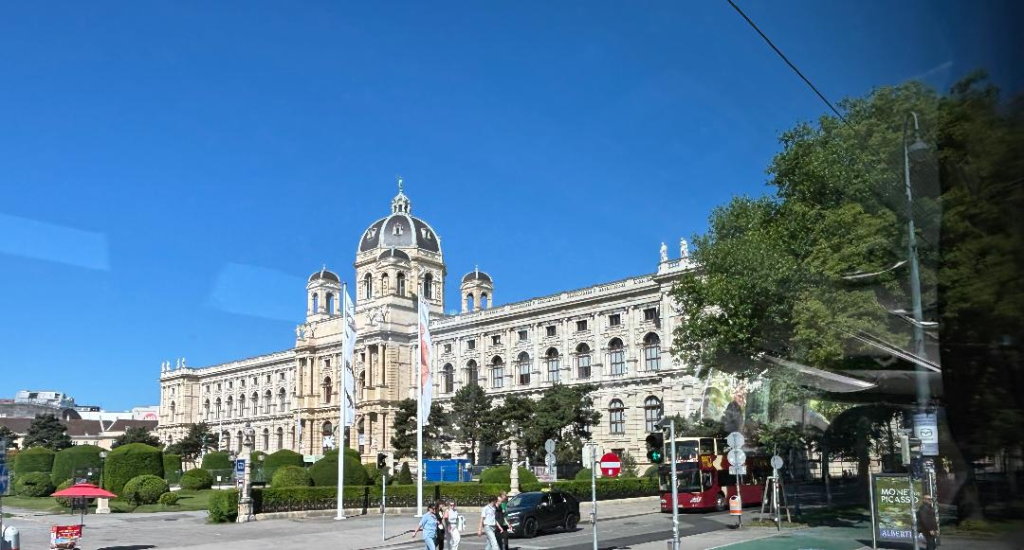
One of the most influential rulers in Austria’s history was a woman, Maria Theresa Habsburg. She ascended to the throne at the age of 23, upon the death of her father, and was the only woman to ever hold the position in her own right. Everyone thought she would cede power to her husband and eldest son, but she did not.
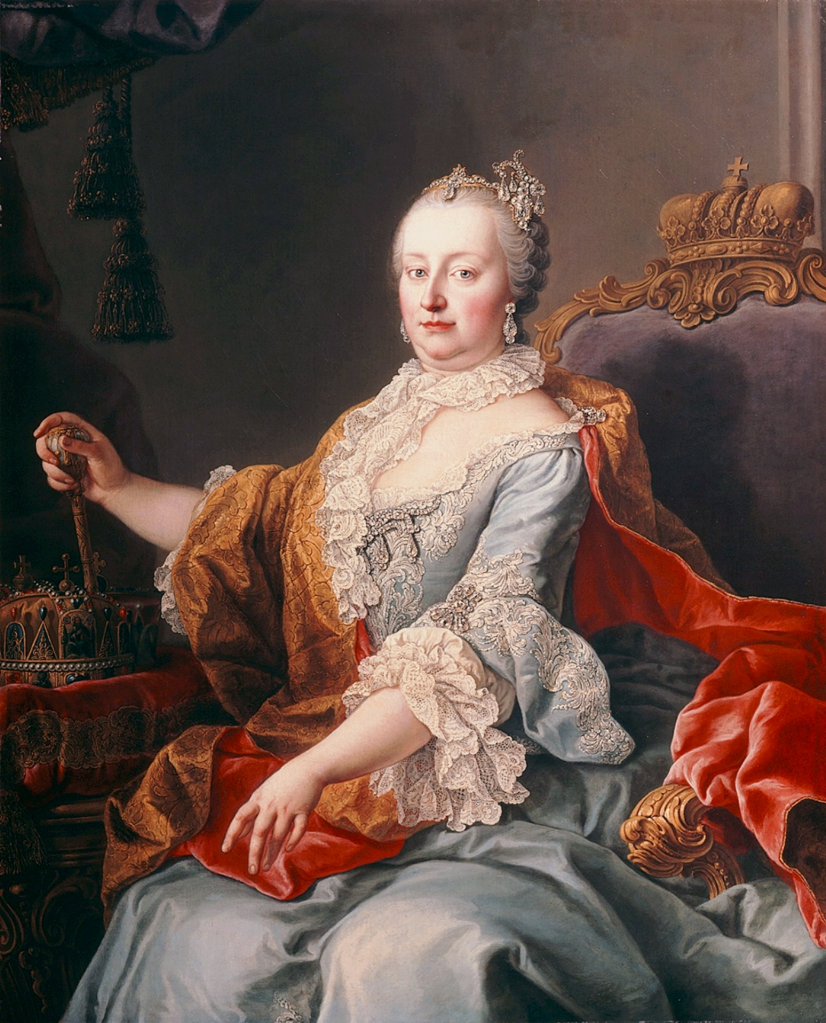
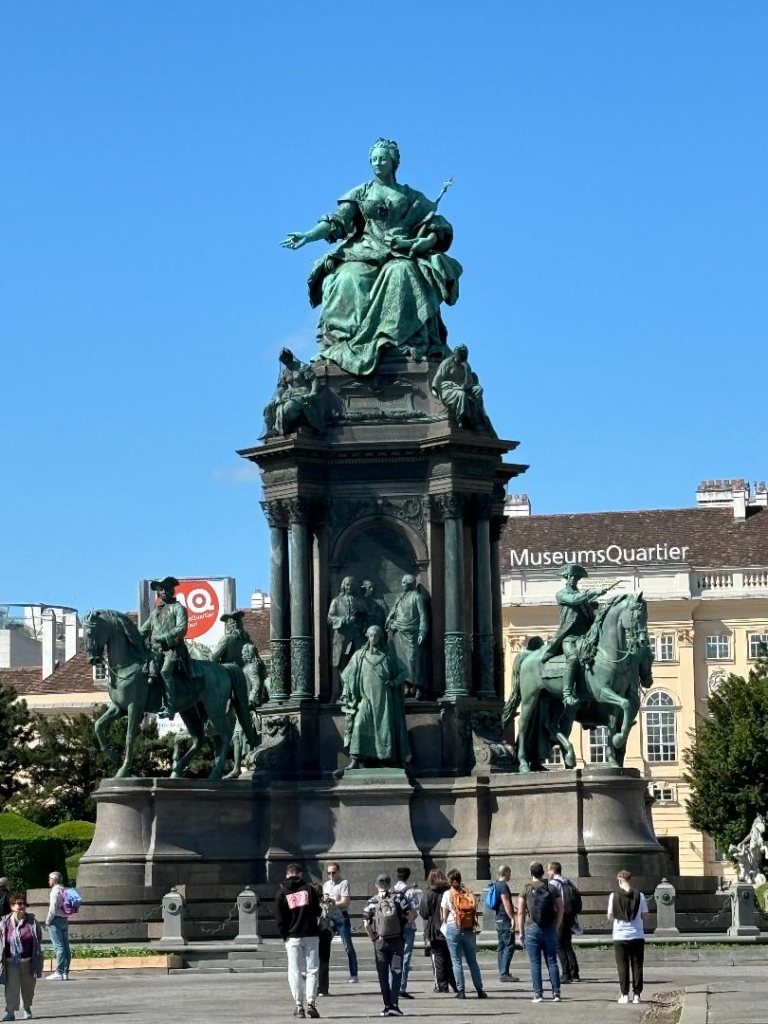
Just 23-years-old when she came into power many underestimated her abilities. Her father had died suddenly from eating poison mushrooms, leaving her a weakened and impoverished state. Some territories had already begun to reject his sovereignty and at least one was quick to launch a military attack upon his death. But Maria Theresa surprised everyone with her acumen and courage. She promulgated institutional, financial, medical and educational reforms (she encouraged the development of a smallpox vaccine and mandated its use and introduced compulsory education), promoted business and agriculture, reorganized the army and improved Austria’s international standing. As if all this weren’t enough, she did it while delivering 16 children in 19 years (whew! just the thought of that exhausts me!) – 10 of whom survived into adulthood – and dealing with a philandering husband who fathered at least 50 (!) more children with various other women. Another little tidbit? One of those surviving children was Marie Antoinette who would become the last queen of France prior to the French Revolution.
In the Great Plague of 1679 (now believed to have been the Bubonic Plague) Vienna lost one third of its population. King Leopold I fled the city and promised to build a “mercy column” of God would just take the illness away. When the plague ended, he kept his word, but what began as a simple column soon evolved into a very complex story board. The end result is the Plague Column erected in 1683 whose basic message is that both the plague and a second siege by the Ottomans were punishments for the sins of the people and it was only King Leopold I’s religious devotion, spirituality and prayers that saved them all. Few people were able to read at the time, so they relied on statues and paintings to tell them the story. Looking at this one we think it might have been easier to teach them to read. The intricacies in the craftsmanship are impressive but there’s a LOT going on here.
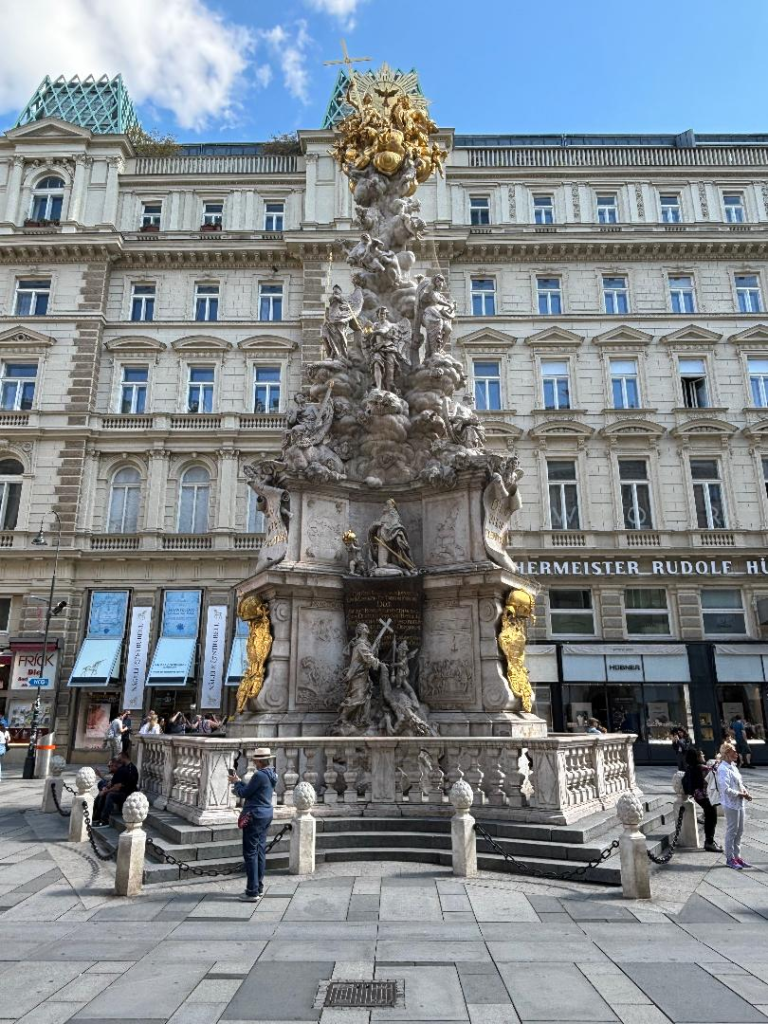
Our last stop was the St. Steven’s Cathedral. Built in the 12th century it is Vienna’s largest church. It was never destroyed in war, however there was a fire inside the church during WWII, and because of the bombings the city’s water supply had been interrupted, so the fire did substantial damage to the wooden roof. It was replaced with the beautiful tile roof you see here.

Afterwards, we had some free time to explore on our own. There wasn’t time to go inside the church (there was a really big line), so we checked out the little holiday market, satisfied Pam’s craving for fries, and toasted the beautiful day.
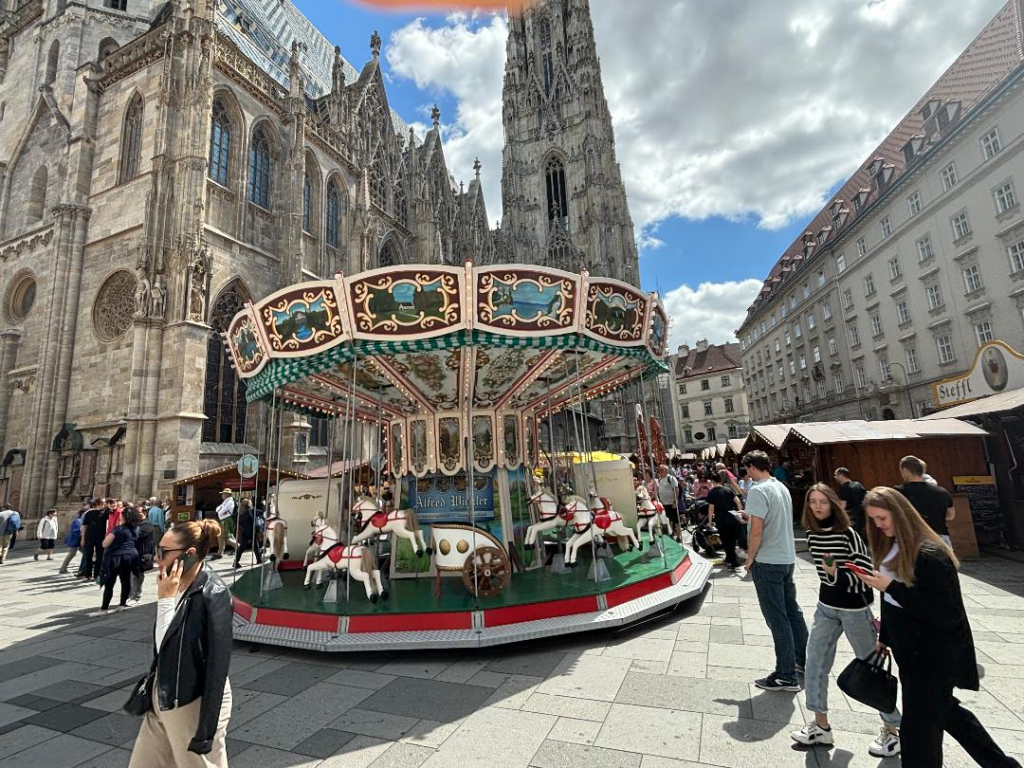
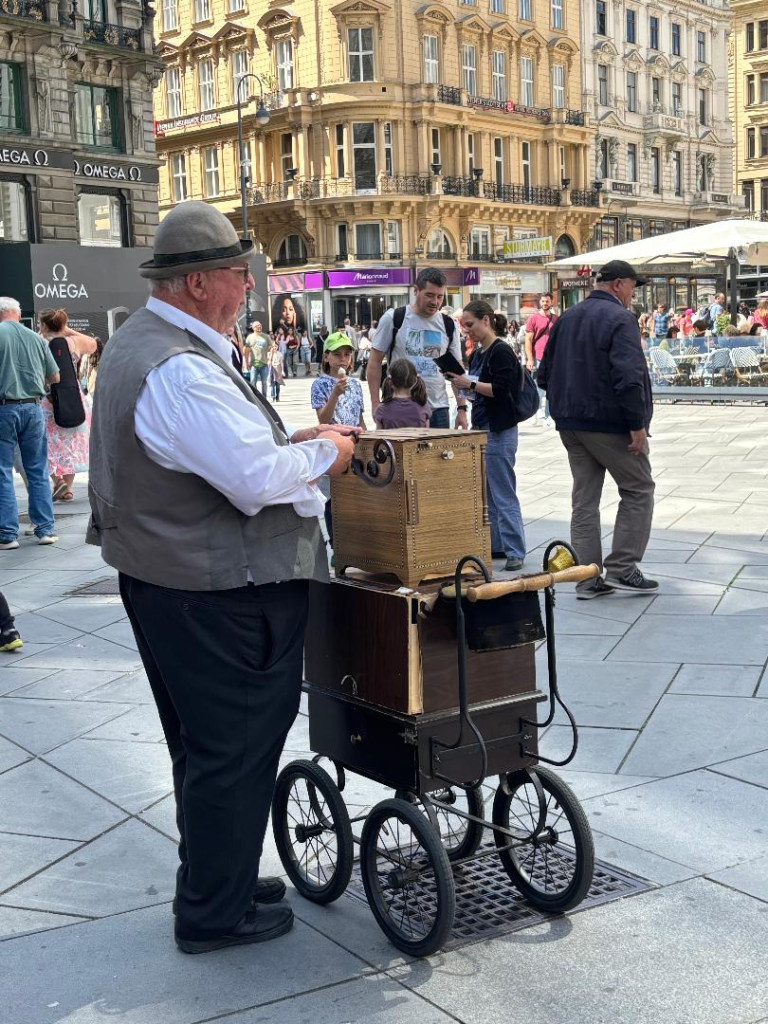
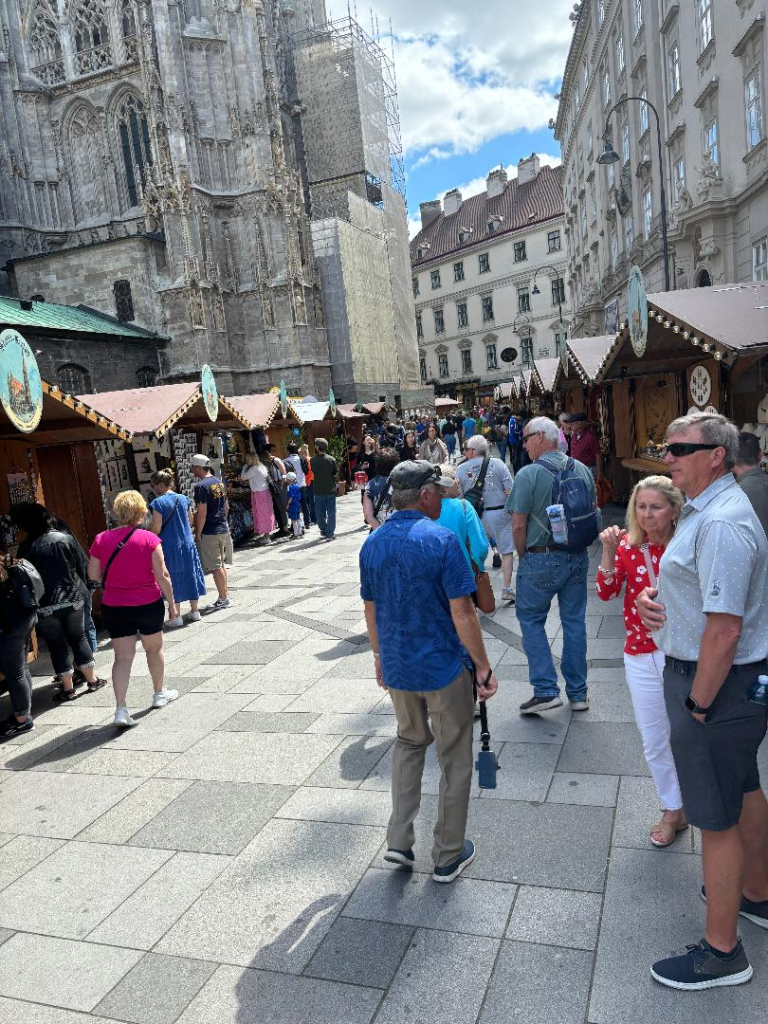
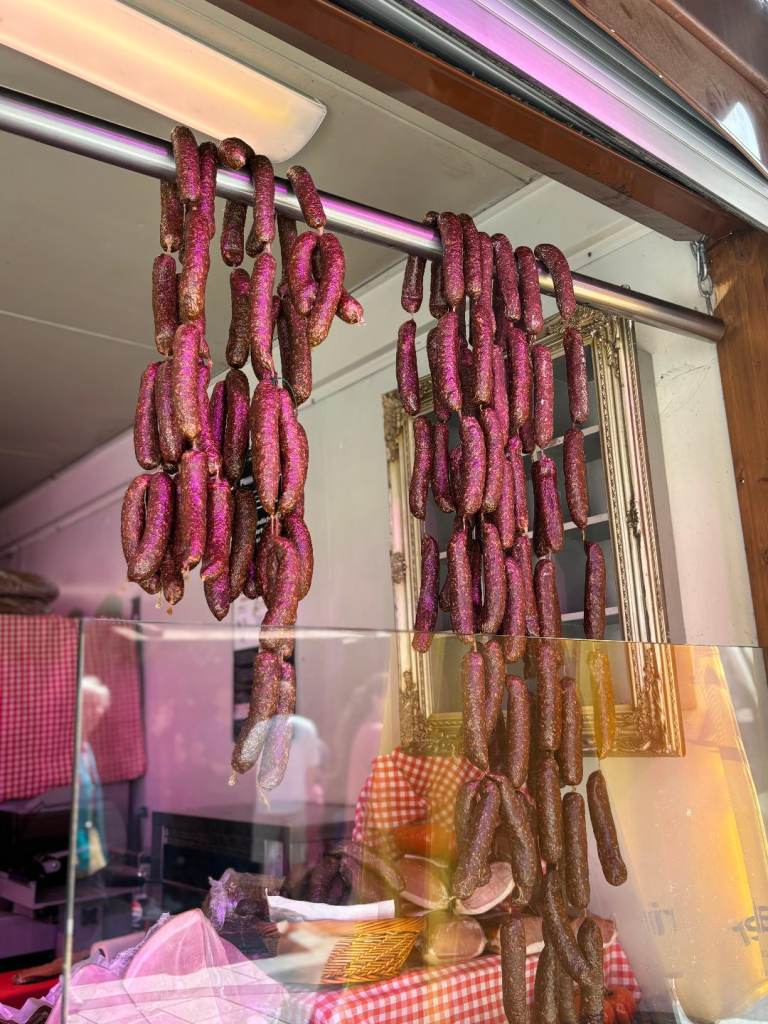
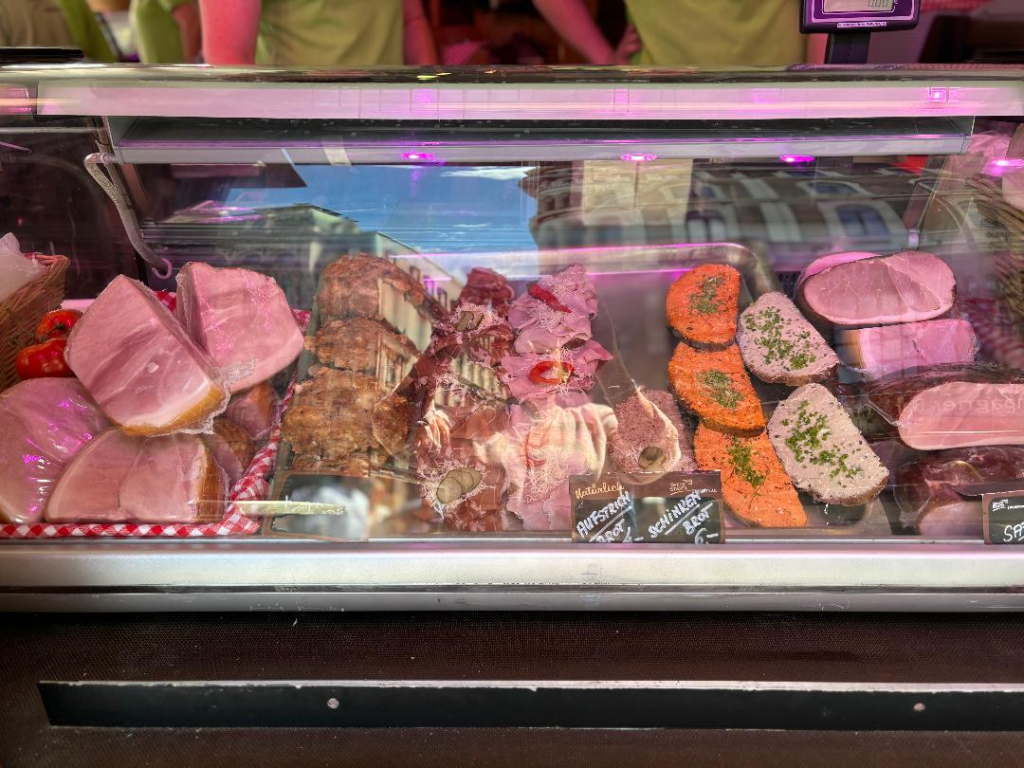
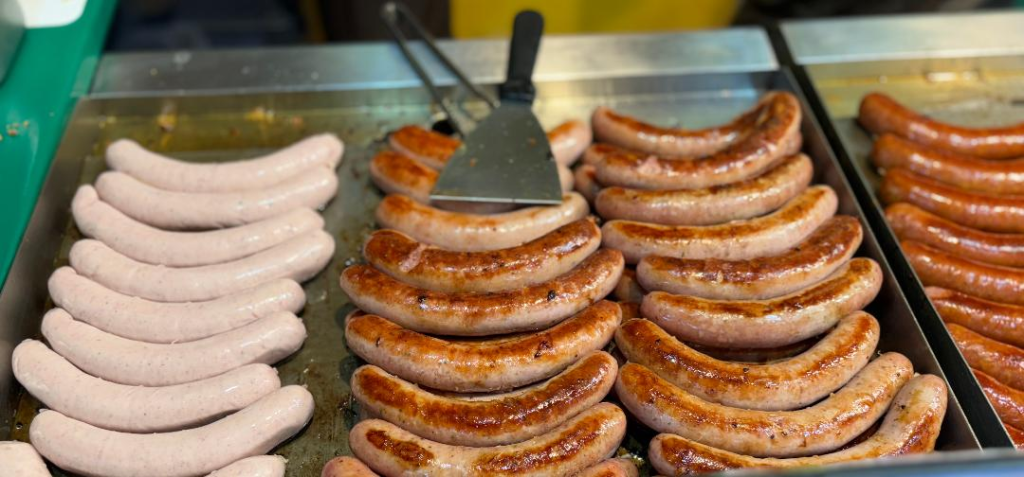
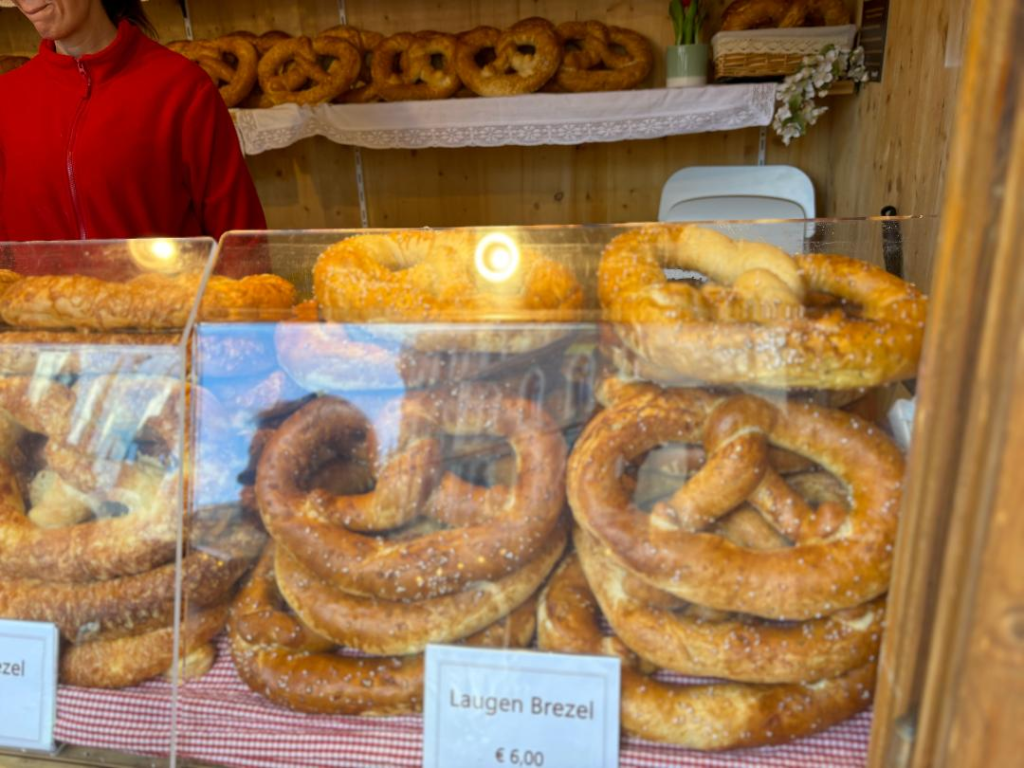
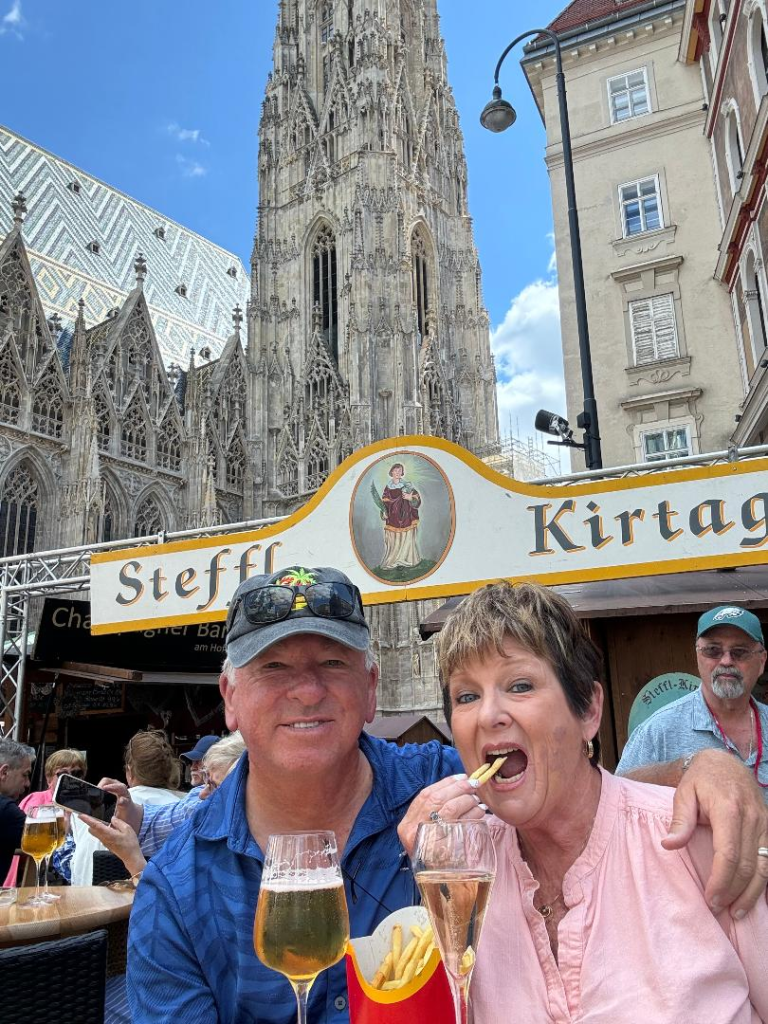

The Austrian’s give new meaning to a waffle cone.
